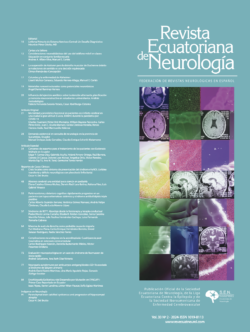Background: Studies carried out in European countries suggest a high prevalence of patients consulting for non-neurological conditions among persons evaluated in outpatient neurologic clinics. However, there is no information on the prevalence of such patients in developing countries.
Objective: To describe the demographic profile of patients with and without neurologic symptoms evaluated at an outpatient neurologic clinic in Guayaquil. Methods: Cohort of 7,519 adults evaluated over a 20-year period. We evaluated data concerning age, gender, year of first evaluation, reason for consultation, diagnosis, complementary neurodiagnostic tests, and follow-up. Patients were classified into three groups according to their main complain: neurologic patients, psychiatric patients, and persons with non-specific clinical manifestations.
Results: Neurologic diseases were found in 6,764 (90%) patients, psychiatric disorders in 186 (2.5%) and non-specific complaints in 569 (7.5%). Non-neurologic patients were younger than those with neurologic diseases (p<0.0001). The smallest prevalence of women was found among persons with non-specific complaints (p=0.017). We noted a lower prevalence of nonneurologic patients during the years that our country experienced a economic crisis. About 50% of patients with psychiatric disorders, and 30% of persons with non-specific complains had one or more neurodiagnostic tests, which did not modify the therapeutic approach in any case. In most cases, those exams were requested by the patients themselves.
Conclusions: The prevalence of non-neurologic disorders in our series is smaller than that reported from European studies, and their demographic profile is somewhat different. There are some characteristics of patients in our population that may account for such differences.





